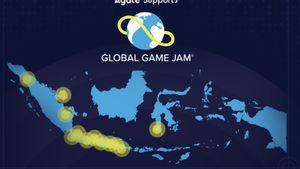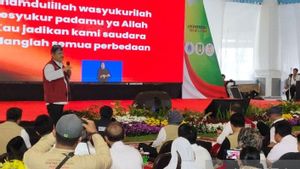JAKARTA - The National Aeronautics and Space Administration (NASA) is planning to put a nuclear power plant on the Moon and is asking for ideas from outsiders how to do it.
In this mission, NASA is working with the Department of Energy's National Laboratory in Idaho, United States (US) to build a solar-independent power source for a mission to the Moon later this decade.
"Providing a reliable, high-power system on the Moon is the next vital step in human space exploration, and achieving it is within our grasp," said Sebastian Corbisiero, head of the Fission Surface Power Project in the lab.
Citing Phys, Saturday, November 20, later, the fission resources will be used to support permanent human life on the Moon, before future manned missions to explore Mars.
NASA says surface fission forces can provide abundant and sustainable power, no matter what the environmental conditions on the Moon or Mars are. This reactor will be built on Earth and then sent to the Moon.
"I hope that surface fission power systems will greatly benefit our plans for power architecture on the Moon and Mars and even drive innovation for use on Earth," said Jim Reuter, associate administrator for NASA's Space Technology Mission Directorate.
If anyone wants to come up with an idea, NASA explains that the reactor proposal should include a plan for a uranium-fueled reactor core, a system to convert nuclear power into usable energy, a thermal management system to keep the reactor cool, and a distribution system that provides no less than 40 kilowatts of energy. Electrical power must be continuously supplied for 10 years.
The reactor must also be able to turn itself on and off, aka run automatically without human assistance and can operate from the lunar landing deck. In addition, the reactor must also be capable of being removed from the lander, run on a mobile system and transported to the location where it will operate.
When launched from Earth to the Moon, the reactor must fit inside a cylinder 12 feet (4 meters) in diameter that is 18 feet (6 meters) long. It must not weigh more than 13,200 pounds (6,000 kilograms). It should be noted, all proposals for the project must be submitted no later than 19 February 2022.
The English, Chinese, Japanese, Arabic, and French versions are automatically generated by the AI. So there may still be inaccuracies in translating, please always see Indonesian as our main language. (system supported by DigitalSiber.id)













